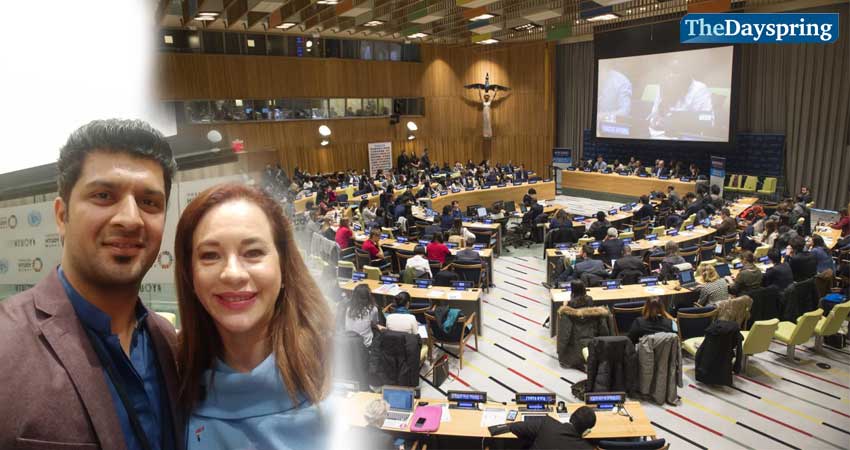By: Khalil Ahmad
All children in the world have special rights and they need their rights to be protected in all respects without any prejudice in any way. This is necessary to ensure their well-being, successful development and their rights. Not only parents, but all governments and state institutions have duty to create a child friendly environment and to promote children’s rights in order to ensure our future. There are millions of children in various parts of the world who are facing violence and discrimination. Children are used as labourers in some countries, immersed in armed conflict, living on the streets and suffering by differences be it religion, minority issues or disabilities. Children feeling the effects of war can be displaced because of the armed conflict and may suffer physical and psychological trauma. There are millions of children in the world whose lives are inextricably connected with public spaces: streets, buildings, and shopping centers, etc. Some of these children will live on the streets, sleeping in parks, doorways or bus shelters. Others may have homes to go back to, but they rely on the streets for survival and sustenance. They may be referred to as ‘street children’, ‘homeless children’ or ‘homeless youth’. Also – at times – they may be described in more negative terms such as ‘beggars’, disguise the fact that these vulnerable children are owed the care, protection, and above all, respect due to all children.
Just like all children, street children have rights enshrined in The Child Rights Convention, which has near universal ratification and support. In 2017, the United Nations have specifically acknowledged these children’s rights in a document called the General Comment (No.21) on Children in Street Situations. In this General Comment, the United Nations Committee on the Rights of the Child provides authoritative guidance to States on developing comprehensive, long-term national strategies on children in street situations using a holistic, child rights approach and addressing both prevention and response in line with the Convention on the Rights of the Child.
Pakistan ratified the Convention on the Rights of the Child on November 12, 1990 and the successive governments have renewed their commitment to creating friendly environment for all Pakistani children. Unfortunately, huge challenges remain for them in the country. An estimate 1.5 million children are on the streets of Pakistan’s major cities and urban centers, constituting the country’s largest and most ostracized social group. These include ‘runaway’ children who live or work on the street, as well as the minority that return to their families at the end of the day with their meager earnings. Domestic violence, unemployment, natural disasters, and poverty are considered the major factors behind the increase in the number of street children. Other factors include unprecedented global industrialization, unplanned and rapid urbanization, family disintegration and lack of education. These children, who often have little or no contact with their families, form one of the most vulnerable strata of society and are denied basic rights such as access to shelter, education and healthcare. To the extent that the basic rights of street children are not already being violated, they are highly exposed to the risk of being drawn into abusive situations including engagement in child labour and subjection to sexual exploitation, trafficking and arbitrary arrest and detention. It is equally true that the future of Pakistani children, and the future of this country, is being jeopardized daily in its bazaars and shopping centers, at its street signals and railway stations, while we, the sentinels, look on. These children, ostracised from society, are easy prey for those operating at its fringes with potentially disastrous consequences for the mainstream. Whilst reports that street children often engage in petty crime are unsurprising, many of these children are also opted into more systemised forms of criminal activity including recruitment into criminal and terrorist gangs.
So the next time you’re faced by a street child in a bazaar, or at a street signal, please do take a moment to consider the compromised future that each child with a dirt smudged face and tattered clothes embodies; a compromised future that we are all helping create unless we take action now. We can take action in a multitude of ways: advocating for the rights of all children, including those on the street; increasing budgets for the social sector, mainly education and putting all necessary efforts to bring street children to school support through specific programmes for their families and the children themselves; ensuring that health services are accessible to these children on the street who are in dire need of social support; adopting a child and giving it a loving home, on an individual level. By consciously trying to shrug off our apathetic stupor when we see these faces on the street, we can make a difference. We can stand up for someone’s rights.
April 12th is International Day for Street Children: a special day recognising the strength and resilience of millions of street children around the world. Celebrated globally since 2012, it is our opportunity to recognise their humanity, dignity and defiance in the face of unimaginable hardships.
The writer is Manager Research & Communication, Society for the Protection of the Rights of the Child, (SPARC) Islamabad.








